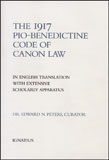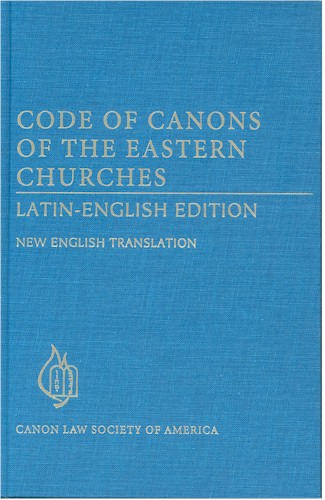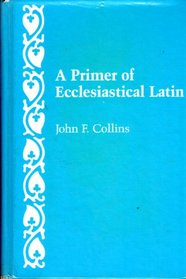|
To work for the proper implementation of canon law is to play an extraordinarily constructive role in continuing the redemptive mission of Christ. Pope John Paul II |
|
|
|
|
Resolution 1152 x 864 |
Updated 28 feb 2016 |
Collins' Primer of Ecclesiastical Latin |
|
Overview
This page undergoes frequent revision. |
Suggestion for students, teachers, and tutors using John Collins (1937-2002), A Primer of Ecclesiastical Latin (Catholic University of America, 1985/1988), 451 pages.
|
|
Who is interested in Collins' Primer?
|
Three groups are interested in Dr. Collins' Primer, namely:
Students enrolled in formal courses using Collins' Primer should use the text as directed by their teachers though what follows here might be helpful as a supplement. Home-schoolers and other independent (but supervised) learners, and in particular the tutors of these independent learners, might also find what follows here useful; indeed, it is chiefly these kinds of Latin learners that I had in mind while developing this page. |
|
|
|
Those who think, however, that they can learn Latin on their own by working through Collins (or, for that matter, any other textbook) should probably abandon that plan. |
|
|
In 30 years of watching and working with Latin students of every sort, I have never found anyone who, knowing only an "analytic" language such as English or French, actually learned a "synthetic" language like Latin from a textbook. Many have tried, and failed, and walked away--not from their futile methodology, but from Latin itself. That's a pity. Most people can learn Latin if they use a workable approach, but setting off into the wilderness with only a textbook as a guide is not a workable approach. Even those who know a Romance language like Spanish, and so have a head start in terms of Latin vocabulary, still must learn Latin grammar & syntax, both of which differ markedly from English and Spanish.
|
Can anyone learn Ecclesiastical Latin on their own? Sure: angels, followed by people who know Classical Latin, Koine Greek, or certain modern languages like German, can learn Ecclesiastical Latin from a textbook. Everyone else needs a teacher or a tutor. |
|
Et ego, quis sum? |
I am not a classically trained Latinist. I am a lawyer, civil and canonical, and it was during graduate studies for the latter that I began to study Ecclesiastical Latin seriously. Our textbook was the very first edition of Collins. I took three intensive Latin courses in grad school and loved them all. Intermittently for five years after that, but almost daily for the last twenty years, I have used Ecclesiastical Latin in my canonical work, have continued to study it formally and informally, and have taught it to a wide variety of students. Specifically in regard to teaching experience, I began tutoring home-school students (using Collins) more than twenty years ago; for the last ten years I have been teaching college-level Beginning and Intermediate Latin at Sacred Heart Major Seminary, again mostly out of Collins. My desk copy of Collins' Primer is the same book I used in grad school. It is now held together by duct tape.
|
Some say I am a good teacher; I prefer to think I'm good at helping people learn. |
|
Some preliminary points about Latin
|
1. Classical Latin and Ecclesiastical Latin are the same language. The cultures that each served, however, differed in many respects and some of these differences are reflected in certain vocabulary, syntax (especially as the centuries progressed), and pronunciation differences between Classical and Ecclesiastical Latin.
2. "Ecclesiastical Latin", "Church Latin", and "Medieval Latin", are basically three terms for the same thing. For more information, see this page.
3. Latin is, of course, an oral-aural language and thus it is best learned by listening to and speaking it, and later, reading and writing it. Of course, very few persons can pursue this approach, but the Family of St. Jerome promotes it. Besides offering a variety of recorded and printed material (including Carmelite Fr. Suitbertus Siedl's Cursus Linguae Latinae Vivae), the FSJ sponsors annually a "Cenaculum" or "Feriae Latinae" during which Latinists of all levels (from world-class masters to complete beginners) meet for one week to develop their Latin listening and speaking skills. I have attended several FSJ Cenacula over the years and learned a great deal at them.
|
|
Resources for Ecclesiastical Latin
|
1. The words "textbook" and "grammar" are often used interchangeably, but strictly speaking they are not the same thing. A textbook is designed for students and explains only the major points of grammar/syntax through frequent, usually contrived, examples. A grammar, in contrast, is designed for professionals and analyses in detail, often comprehensively, all points of grammar/syntax, citing a few (albeit authentic) literary passages to illustrate each point. Thus, Collins’ Primer is a textbook while, say, Nunn’s Introduction is a grammar. Every Latin teacher or tutor, no matter what textbook he or she is using with students, should have at least one good Latin grammar on hand for consultation. For more information on Latin textbooks and grammars, see this page.
2. Nearly all Latin textbooks focus on "Classical Latin" as opposed to "Ecclesiastical Latin". Most Classical textbooks would serve students of Ecclesiastical Latin just fine. Church Latin students would have to learn some additional vocabulary (the Romans did not have words for "baptism" or "bishop", and so on), would need to notice how some grammatical or syntactical structures work differently, and be aware of differing pronunciation conventions, but learning Ecclesiastical Latin from a Classical Latin textbook is not a problem.
3. Collins' Primer is one of the very few textbooks dealing expressly with Ecclesiastical Latin. It is certainly the best available now. Anyone using Collins should also have John Dunlap, An Answer Key to A Primer of Ecclesiastical Latin (Catholic University of America, 2006 or later). Order here. Note: Dunlap's answers are thoroughly reliable but they are not necessarily the only way that certain words or phrases or sentences could be rendered. Beginning language students tend to think there is only one right way to translate this into that; not so.
4. Beginning Latin students need not buy a Latin dictionary. Free on-line Latin dictionaries such as William Whittaker's Words are excellent and several nearly-free downloadable dictionaries such as SPQR are more than sufficient for beginners who feel the need to have a dictionary beyond the short one provided by Collins. Intermediate Latin students would benefit from Richard Prior & Joseph Wohlberg, 501 Latin Verbs fully conjugated in all the tenses (Barron's Educational Series, 1995 or later). Order here.
|
|
Basic learning tips |
1. The process of acquiring a language through formal study differs dramatically from the acquisition of a language by informal (usually immersion) exposure. Formal study of a language requires work--more work for some, less work for others, but for everyone, work. Moreover, English-speakers for whom Latin represents their first encounter with a "synthetic" language will need to devote even more time to their studies because, for them, Latin is not simply a different language, it is a different kind of language.
2. Virtually all students of a foreign language need to study that language nearly every day--and that means study outside of class! The great majority of Latin students will benefit by the following approach: (a) devote one serious block of time (usually an hour) every day to the uninterrupted study of whatever aspect of Latin is currently being presented in class; then, (b) devote about that same amount of time each day to a series of short (five or ten minute), focused reviews of Latin throughout the day. Combining frequency of exposure to a language throughout the day with a daily dose of extended language study is a very effective combination.
3. Finally, besides a daily concentrated block of study time and several short bursts through the day for review, Latin lends itself well to "micro-burst" learning. For example, during my early studies, I always carried a Latin declension or a conjugation on a 3x5 card in my shirt pocket (not in a briefcase, not in a wallet, but in my shirt pocket, where I could access it in two seconds!). Then, while, say, climbing the stairs or waiting in a line, I would silently recite the paradigm and, if I got stuck, I could pull the card out and check it immediately. There is considerable 'downtime' in the course of a normal day, Latin students can make great use of those breaks.
|
|
More learning tips
I will offer more learning tips below. These are offered to help get one started on the right foot. |
1. Students of Ecclesiastical Latin should begin learning their basic prayers right away even if, as is inevitable at first, the vocabulary and/or syntax of these prayers is unknown. Start with the Sign of the Cross and gradually add the others. Say these prayers in Latin, aloud, whenever possible to develop facility and confidence. Students can later draw on these prayers for many examples of grammatical and syntactical points.
2. Students must memorize Latin "forms" (noun declensions, verb conjugations, and so on) as soon as they are encountered and review them frequently. Remember that recognizing a form is not the same thing as knowing a form. Forms are not known until they can be produced on demand, out of order; they are not known well until they can be consistently used correctly in translation work. This takes time.
3. As soon as possible students should begin turning English into Latin even if their primary goal in learning Latin is, as is likely, simply to be able render Latin into good English because one of the best ways to achieve Latin-into-English competence is to practice rendering English into correct Latin. I strongly recommend that students try the English-to-Latin exercises offered in Collins. As a rule of thumb, 10 or 15 minutes of spent turning English into Latin is worth 30 or 40 minutes of translating Latin into English.
|
|
How to use this page |
The materials below track Collins' chapters and his grammar sections. This webpage is not designed to teach Latin, but rather, to supplement what is offered in Collins. If I think I have something useful to add to what Collins says in this section or that, I will add it to this section or that. If not, I simply mark it with "Ok", and move on. I do intend to add additional practice materials, both Latin-into-English and English-into-Latin. I often find it easier to address the student than the teacher or tutor, so, get ready for lots of sentences in the second person singular.
|
| Final note |
Latin is a language, so there are exceptions to almost every rule in it—not nearly as many exceptions as there are in English, I grant, but enough. I will not flag every statement here that might be liable to some exception. If that kind of technical information is needed (and eventually, it will be) one may either wait till Collins or I hit the exception or consult a professional grammar.
|
|
Chapter One
There is a boatload of stuff to learn in this chapter. |
1. Pronunciation. First the good news, Latin uses the same alphabet that English uses (more precisely, we use practically the same alphabet the Romans did); now the bad news, no one ever learned pronunciation from a book. Because, however, Latin morphology closely tracks its phonology (a fancy way to say that Latin words are nearly always spelled the way they sound—unlike much of English, to say nothing of French!), students need to hear good Latin in order to read, and eventually to speak and write, good Latin, so they need to listen to skilled Latin speakers or to recordings by experts.
Collins provides macrons and other guides to pronunciation, but the vast majority of Latin texts do not use these marks and so memorizing them is of little long-term value. The few times one might need pronunciation helps to proclaim Latin publicly (say, in the liturgy) prose accents will likely be supplied.
For my discussion of where the accent/stress falls in most Latin words, see this page.
2. Overview of Nouns. This topic is hugely important and goes directly to the heart of Latin grammar and syntax. It represents one of the greatest Latin learning challenges for English speakers. Latin requires one to keep track of three things in regard to nouns: number, gender, and case (the order of these factors is not important). Learning number, gender, and case is intimidating at first and it requires effort, but one simply must be able to analyze almost any Latin noun in terms of its two numbers (singular and plural), its three genders (masculine, feminine, and neuter), and its five major cases (nominative, genitive, dative, accusative, and ablative) in order to understand what Latin is doing. The rewards of a case system, in terms of clarity of thought and beauty of expression are, you will come to see, huge and Latin makes powerful use of it.
3. First declension nouns. Think of a declension as a ‘family’ of nouns, not as 'group' or a 'collection' (almost anything can be grouped or collected), but as a family, i.e., as a set of closely related nouns that act very similarly among themselves and share certain patterns with other noun families. There are five declensions in Latin (I, II, III, IV, and V). I estimate that one out of five Latin nouns belongs to Declension I.
4. Prepositions. Along with adverbs (to be discussed later), prepositions are the student’s friend. Prepositions, like adverbs, are little words that never change—they are not declined, they are not conjugated. Once you know a preposition, you know it forever.
In the pre-literate period of human language, prepositions likely marked physical relationships between two things, denoting concepts like ‘over’ the river, and ‘through’ the woods. Prepositions still work this way; but now they also express related notions metaphorically, as in, 'going over a report' or 'praying through the night'. Prepositions are called prepositions because, in most instances, they are 'pre-positioned', or placed before, the nouns they 'control' (or 'take', or work with).
True Latin prepositions take only two cases, accusative or ablative, and most take the accusative (though prepositions taking the ablative are used so commonly they feel more numerous). Three prepositions (in, super, and sub) can take either of these cases with slightly different meanings. Memorize the meaning of the prepositions and what case(s) they take right away. |
|
Chapter Two |
5. Second declension masculine nouns. Ok.
6. Present tense of esse. Everybody starts off teaching the verb “to be”. Not only is esse irregular, however, but it does some very strange things, like acting as a "copulative", which in turn basically demands understanding of how adjectives work. Personally, I would have started with some simple transitive verbs, but esse needs to be understood sooner or later, so dive in.
7. Kinds of sentences. Frankly, I would skip this section, it requires far too much Latin grammar to make sense of it. Knowing what kinds of sentences exist in Latin and English is important, but that information will emerge over time.
8. Direct statements. English is notorious for using “expletive” or “dummy” subjects in sentences, something utterly foreign to Latin. It will take time English-speakers to stop looking for such subjects in Latin, and to start remembering to add them for idiomatic English translations.
9. Subject-Verb agreement. Ok, with this note: Down the road a bit Latin will sometimes use what looks like a singular subject with a plural verb, or a plural subject with a singular verb. This is rare, but might have resulted from what’s called “constructio ad sensum”, that is, taking the sense of the word, rather than its pure grammatical form. “Constructio ad sensum” is rare.
10. Genitive. I generally do not allow students to use the English genitive case (our apostrophe-'s') to render Latin genitives orally, because it is difficult for the English ear to distinguish genitive singulars from nominative plurals. I require, for example, students to render “ecclesia Domini” as “church of the Lord” instead of “the Lord’s church”, even though the latter is correct English. |
| Chapter Three |
| Chapter Four |
| Chapter Five |
| Chapter Six |
| Chapter Seven |
| Chapter Eight |
| Chapter Nine |
| Chapter Ten |
| Chapter Eleven |
| Chapter Twelve |
| Chapter Thirteen |
| Chapter Fourteen |
| Chapter Fifteen |
| Chapter Sixteen |
| Chapter Seventeen |
|
Chapter Eighteen |
96. Future active participle. Ok.
97. Future passive participle. Ok.
98. Periphrastics. Scarcely distinguishable from the Greek periphrastic discussed in grammar section 173.
99. Dative of personal agency. Again, note that the dative never, ever takes a preposition in Latin.
100. Participle review. Ok.
Vocab notes.
|
|
Chapter Nineteen
A very crowded, but not a very difficult, chapter. |
101. Fifth declension. Ok.
102. Imperative mood. A ditty reminds students that "Dic, duc, fac, and fer, got no 'e' when it ought'a be there."
103. Vocative case. Ok.
104. First and second person personal pronouns. Ok.
105. Doubles accusatives. Ok.
|
Any chapter that presents the vocative case and the imperative mood simultaneously cries out to be illustrated by the great prayer, Anima Christi [Soul of Christ]
Anima Christi, sanctifica me. Corpus Christi, salva me. Sanguis Christi, inebria me. Aqua lateris Christi, lava me. Passio Christi, conforta me. O bone Jesu, exaudi me. Intra tua vulnera absconde me. Ne permittas me separari a te. Ab hoste maligno defende me. In hora mortis meae voca me. Et iube me venire ad te, ut cum Sanctis tuis laudem te, in saecula saeculorum. Amen.
|
|
Chapter Twenty |
|
Chapter Twenty One |
|
Chapter Twenty Two |
|
Chapter Twenty Three |
121. Present subjunctives of esse and posse. Ok.
122. Emphatic demonstratives. Memorize, but the task is not as daunting as it seems. Notice, first, that the plurals use almost exactly same endings as do Decl. I & II. Then notice that the gen. and dat. singulars are the same for all genders. I suggest memorizing hic, haec, hoc according to gender (as below, as we have with other nouns/adjectives) and not lumping all the singulars on one side and all the plurals on the other, as Collins does, but it’s your call.
123. Unemphatics. Memorize, but the task is not as daunting as it seems. Notice, first, that plurals use exactly same endings as do Decl. I & II. Then notice that the gen. and dat. singulars are the same for all genders. I suggest memorizing is, ea, id according to gender (as below, as we have with other nouns/adjectives) and not lumping all the singulars on one side and all the plurals on the other, as Collins does, but it’s your call.
xxxxxWhen going from English to Latin, moderns are tempted to overuse is, ea, id, as subjects for verbs. Recall that Latin does very well without expressed subjects, so, if you do not have to specify that it actually is a “he” who is walking or a “she” who is singing, do not bother with Is ambulat or Ea cantat, just use “Ambulat” or "Cantat."
124. Result clauses. Ok.
125. Characterizing clauses. Ok.
Vocab Notes.
Readings.
The Nicene Creed is a cornucopia of accusatives. There are 46 accusatives in this text, including direct objects of (transitive) verbs, objects of prepositions, and adjectives (sometimes participles) modifying other accusatives. Find them. |
||||||||||||||||||||||||||||||||||||||||||||||||||||||||||||||||||||||||||||||||||||
|
Chapter Twenty Four |
|
Chapter Twenty Five |
|
Chapter Twenty Six |
|
Chapter Twenty Seven |
|
Chapter Twenty Eight |
|
Chapter Twenty Nine |
|
Chapter Thirty
The grammar in this chapter is very important.
|
152. Present infinitives. Latin infinitives (like English infinitives) have two voices, active and passive. The infinitives seen up till now have been active voice.
153. Negative commands. While Latin has an imperative mood for expressing positive commands, it does not have a purely negative imperative for expressing prohibitions. Instead, Latin uses a variety of constructions in other moods to express prohibitions. =
154. Indirect discourse, subject-accusatives with infinitives. Ok.
|
|
Chapter Thirty One
|
155. Perfect infinitives. Latin infinitives (like English infinitives) have three tenses. The infinitives seen up till now have been present tense. The future infinitive is coming in the next chapter.
156. Indirect discourse, subject-accusatives with infinitives. Ok.
157. Predicate Genitives. Ok.
158. Conditional relatives. Ok.
|
|
Chapter Thirty Two
Little new grammar is presented in this chapter.
|
159. Future infinitive. The future passive infinitive is, as Collins said, very rare, but, in a nutshell, it uses the verb ire in the passive, iri, and the supine (which Collins does not explain).
160. Using the future infinitive. Ok.
161. Indirect reflexives. Ok.
162. Summary of ways to express purpose. Ok.
|
|
Chapter Thirty Three
Little new grammar is presented in this chapter.
|
163. Verb fero. Ok.
164. Ablative of time when. Ok.
165. Accusative of duration/extent. Ok.
166. Ablative of duration. The ablative to express duration is not used as common as the accusative of duration.
167. Summary of conditional clauses. I do not find this summary helpful. Refer back to Collins’ original presentations of these matters or consult a grammar.
Vocab Notes.
Fallo is very often used in the passive voice. While one can say “Nisi fallo …” [Unless I am wrong], one is more likely to hear “Nisi fallor …” [Unless I am mistaken …] |
|
Chapter Thirty Four
Little new grammar is presented in this chapter. |
168. Irregular verb fieri. Ok.
169. There are two tricks here: (a) to appreciate what it means to say that all cardinal numbers (to say nothing of ordinal numbers, of course) are adjectives, but that they do not decline past the number three; and (b) to realize how widely English uses numbers as names (i.e., as nouns), something impossible for the Roman mind.
170. Impersonal verbs. Ok.
171. Summary of the genitive. Ok.
172. Summary of the dative. Ok.
|
|
Chapter Thirty Five
Little new grammar is presented in this chapter.
|
173. Greek periphrastics sound scary but are actually easy. What to Roman ears sounded like a "round-about way" of talking (Greek: peri-phrastic) is virtually identical to the English present (progressive) tense. Compare the one-word Latin sentence: Laudo [I praise • I am praising • I do praise] with the two-word Latin sentence Sum laudans [I am praising, lit., 'I am the praising one']. A good Roman, of course, does not want to use two words to say what could as accurately be said with one word, but, the Greeks used periphrastic forms, and the Greeks were pretty cool grammar-wise. See also grammar section 98.
174. Syncopated verb forms shorten some longish verb forms for easier speaking. An example is found in the famous medieval student drinking song Gaudeamus igitur. The second verse of Gaudeamus asks "Ubi sunt qui ante nos, in mundo fuere?" [Where are those who were in the world before us?]. The word fuere looks like, at first glance, some sort of infinitive; it's not. Fuere is a shortened form of fuerunt (3p, pl., perf., esse).
175. The historical present. Ok.
176. Cognate ablatives. Ok.
177. Accusative review. Ok.
178. Ablative review. Ok.
|
|
Final thought |
You never finish learning Latin. At some point, you just stop. Fr. Reggie Foster |





